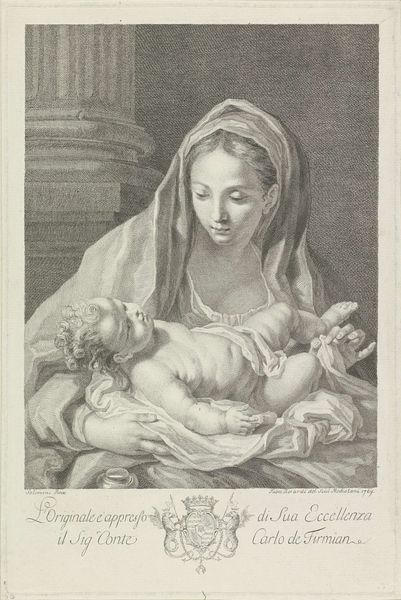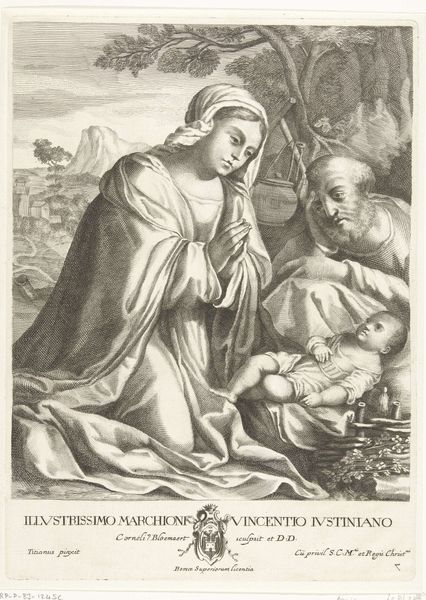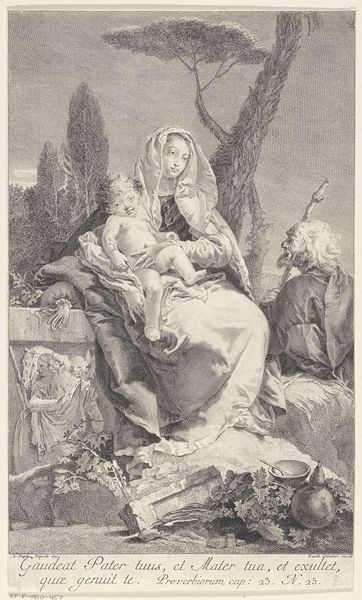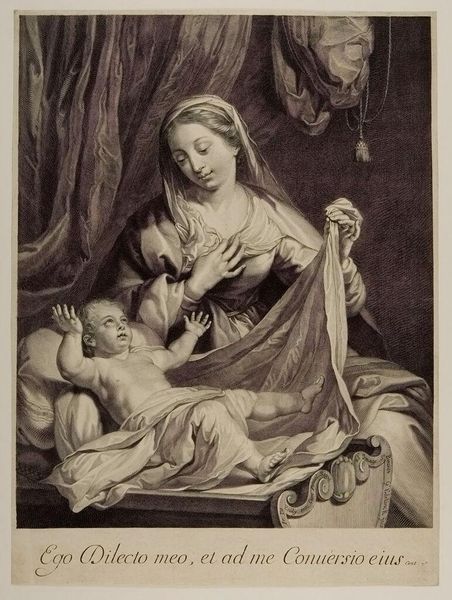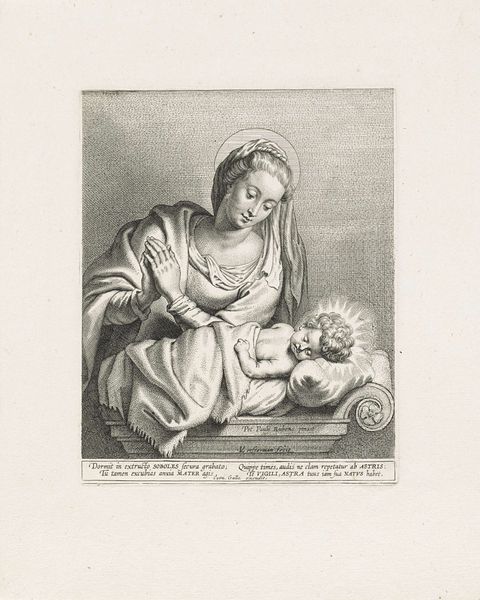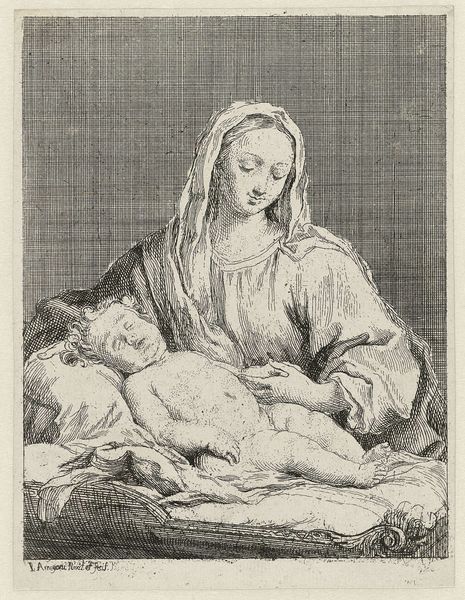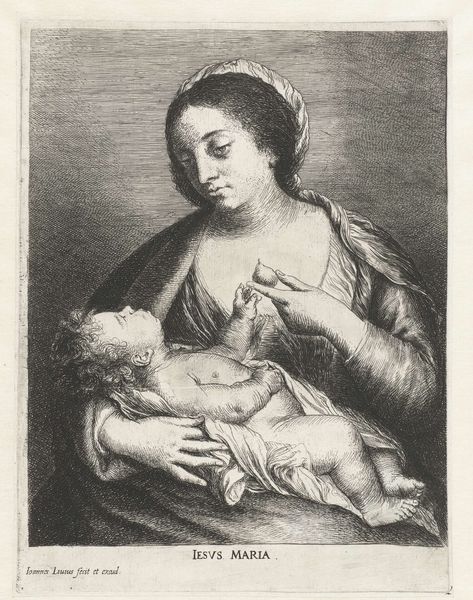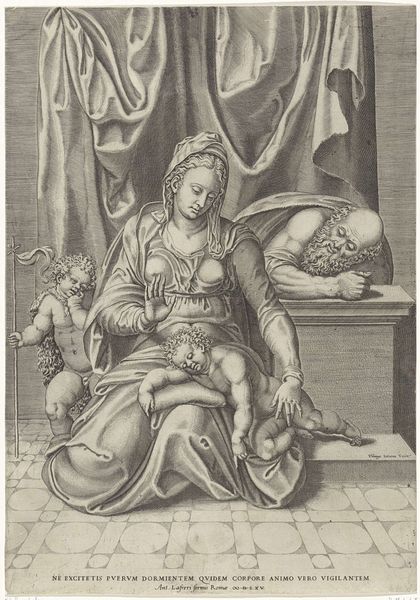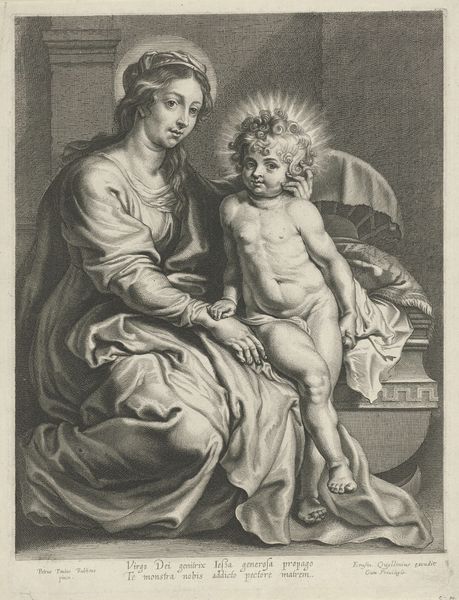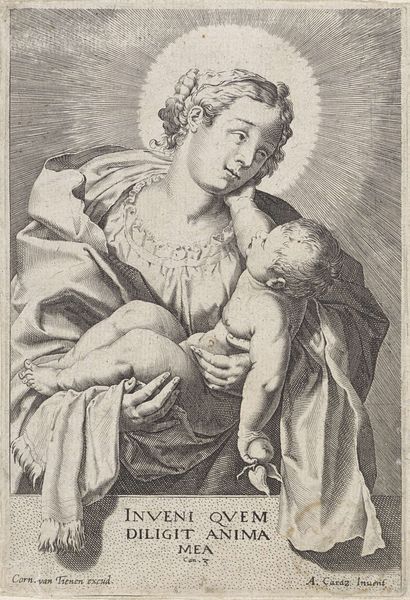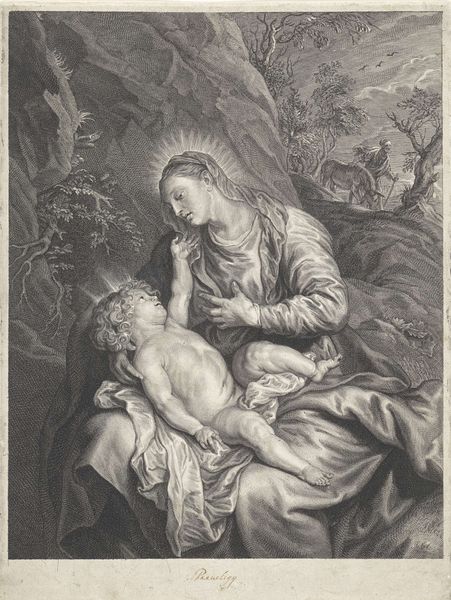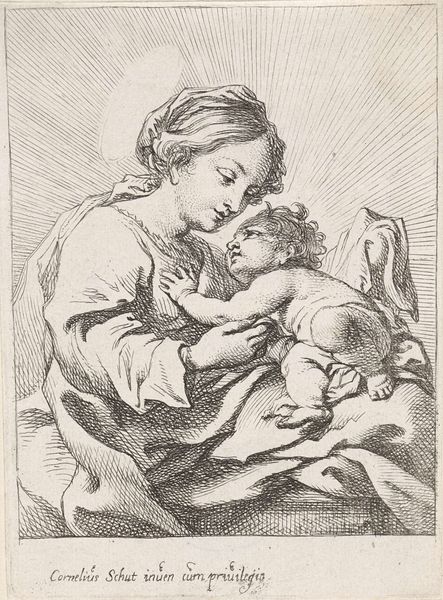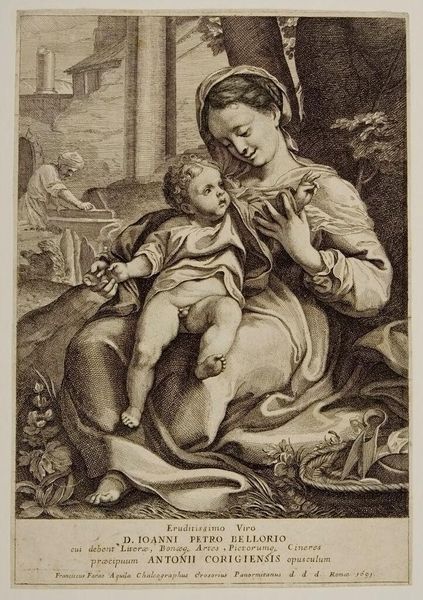
engraving
#
portrait
#
baroque
#
figuration
#
portrait reference
#
portrait drawing
#
engraving
Dimensions: height 192 mm, width 152 mm
Copyright: Rijks Museum: Open Domain
Editor: Here we have Lucas Vorsterman's engraving, "Maria in aanbidding bij het Christuskind," dating from sometime between 1640 and 1670. I’m struck by the detail he achieved with what must have been a laborious engraving process. It seems to elevate even the blanket folds to something quite precious. What can you tell me about it? Curator: It's crucial to look at Vorsterman's print through a materialist lens, considering the engraving process itself. Each line meticulously etched represents labor. This print was, after all, made to circulate. Its material existence facilitated religious devotion within a particular social and economic context. Consider the dissemination of imagery; How might prints like these function almost as early forms of mass media, shaping perceptions and reinforcing ideological narratives? Editor: So, beyond the religious narrative, you're interested in the process and the role it played in society at the time? Curator: Precisely. Think about the economics of printmaking in the 17th century. How does the production of multiple copies impact the perceived value of an image? What about the labour that would've gone into production on this scale? The lines in this work may hint at its replication. Can we even fully credit Lucas Vorsterman without talking about those within his immediate or extended workshop? These questions get us closer to grasping this print’s historical function. Editor: That’s fascinating. I never thought about it that way. It’s much more than just an image of Mary and the baby Jesus. Curator: Absolutely! By emphasizing process, materiality, and social context, we recognize how art operates as an integral part of a broader cultural landscape. How our modern world might change perceptions on historic ideas of artistic creation. Editor: This has given me a completely new perspective. I’ll definitely be thinking about the ‘how’ and ‘why’ of art production more deeply now. Curator: Indeed. Always look beyond the surface! There are always deeper material and social processes at play.
Comments
No comments
Be the first to comment and join the conversation on the ultimate creative platform.
